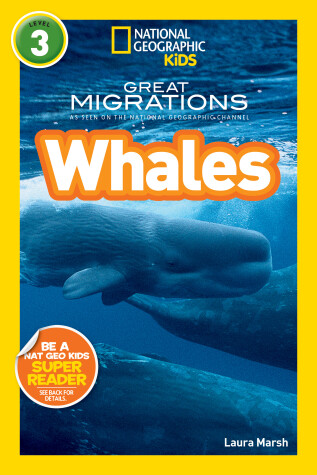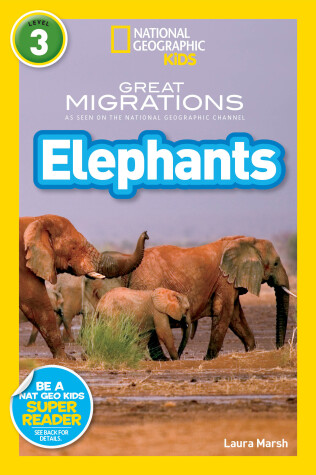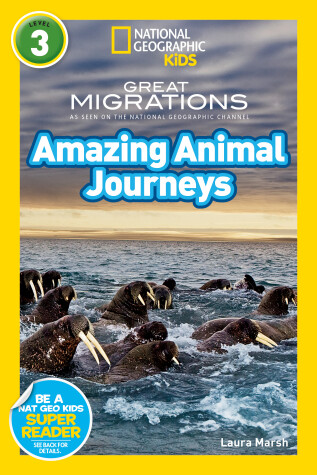National Geographic Kids Readers: Level 3
4 total works
Over the course of their 70-year lifespan, sperm whales will easily travel the circumference of the Earth in search of food and the need to breed and find a mate. Males will travel as far north as the Bering Sea and as far south as Antarctica in order to find enough food to sustain their ways of live—up to 700 squid a day! Along the way, these massive beasts battle 30-feet-long giant squids, and each other, to sustain their ways of life.
National Geographic supports K-12 educators with ELA Common Core Resources.
Visit www.natgeoed.org/commoncore for more information.
National Geographic supports K-12 educators with ELA Common Core Resources.
Visit www.natgeoed.org/commoncore for more information.
National Geographic Kids Readers: Great Migrations Elephants
by Laura Marsh
Published 12 October 2010
This exciting reader follows the story of the longest and the most demanding elephant migration on the planet. Living at the furthest corners of the hot and dry Sahara Desert, the very margins of where elephants can survive, hundreds of these great creatures make a dangerous but necessary journey as their main source of food and water dries up and they must go in search of more. Battling 120-degree heat, sandstorms, and fierce thunderstorms, these amazing animals travel 35 miles a day in a race against time in search of the bare essentials of life.
National Geographic supports K-12 educators with ELA Common Core Resources.
Visit www.natgeoed.org/commoncore for more information.
National Geographic supports K-12 educators with ELA Common Core Resources.
Visit www.natgeoed.org/commoncore for more information.
Great Migrations Amazing Animal Journeys (National Geographic Kids Readers, Level 3)
by Laura Marsh
Published 12 October 2010
Every year like clockwork, animals both big and small are driven by a natural instinct to move, in order to survive. On both land and sea, they fight the odds and the forces of nature to breed, feed, or lead and carry on for future generations. This reader is an introduction to the treacherous trek of the zebra, walrus, and Christmas Island red crab to overcome obstacles that include hungry cheetahs, stinging yellow crazy ants, and even their fellow species to make the often impossible journey of their lives.
National Geographic supports K-12 educators with ELA Common Core Resources.
Visit www.natgeoed.org/commoncore for more information.
National Geographic supports K-12 educators with ELA Common Core Resources.
Visit www.natgeoed.org/commoncore for more information.
National Geographic Kids Readers: Great Migrations Butterflies
by Laura Marsh
Published 12 October 2010
The monarch butterfly, one of the most seemingly delicate of all of nature’s animals, proves to be one of the toughest in this reader. Making the yearly trip from the Northern United States and Canada to the Oyamel forest of Mexico is no easy task, and it takes five generations of butterflies in order to do so. Battling cold temperatures and the threat of starvation, these beautiful insects complete an almost 3,000 mile journey over the course of two months, only to have to turn and around and head back home.
National Geographic supports K-12 educators with ELA Common Core Resources.
Visit www.natgeoed.org/commoncore for more information.
National Geographic supports K-12 educators with ELA Common Core Resources.
Visit www.natgeoed.org/commoncore for more information.



